|
|
|
|
| Refurbishing a Vintage End Grain
Professional Butcher Block
|
|
|
|
|
|
| This
is a true, professional butcher block that we purchased in September,
2014. Note the double dovetail and tiebolt construction.
The
top is 24" X 24" X 16" thick, for a total of about 220 pounds of
beautiful hard maple. The legs are probably not original to the top.
The tenons on the legs, where they fit into the holes bored into the
underside of the block, are over 1/32"too small. This is too much to be accounted for by natural wood movement. |
|
|
|
|
|
| The
following pix show the process of milling the top flat and
parallel to the bottom. The milling process is followed by
sanding with a belt sander, then hand sanding to 220 grit. Keep in mind
that I'm removing about 1/32" per pass. Watch the "topographic
map"unfold as each pass exposes the wear pattern. |
|
|
|
|
|
| 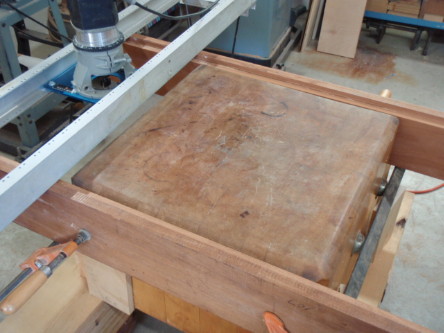 | Guide rails in place, ready to start. |
|
| 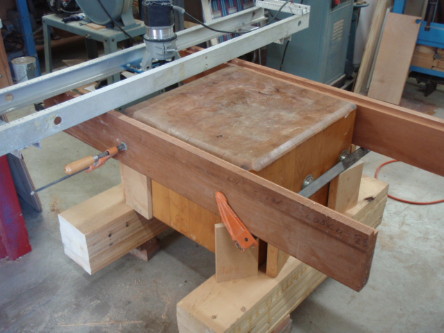 |
|
|
|  | First pass, removing just over 1/32" |
|
| 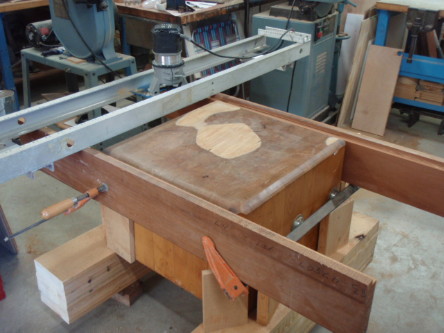 |
|
|
| 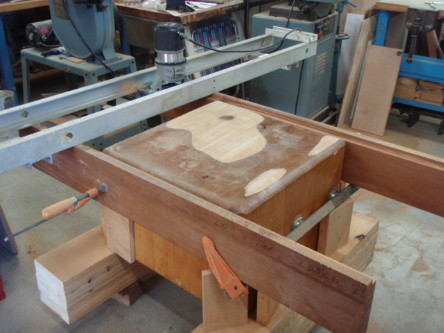 |
|
|
|  |
|
|
| 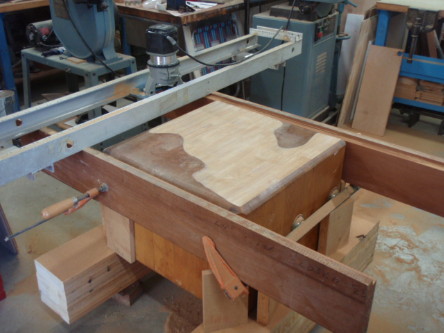 |
|
|
| 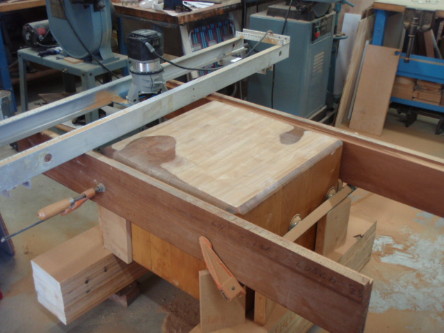 |
|
|
| 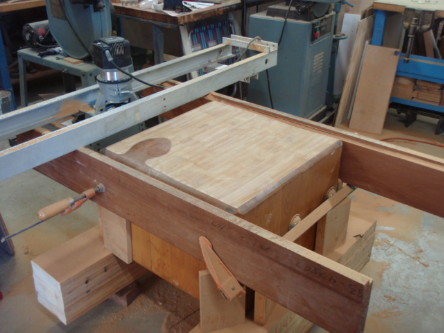 |
|
|
|  | Almost there. |
|
|  |
|
|
| 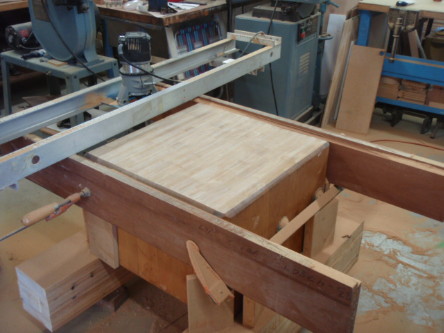 | OK, now the top is flat. |
|
|
|
|
|
| The
total amount removed was just over 5/16". This block obviously
either did not see very many years of full time use, or has been
resurfaced before. |
|
|
|
|
|
| The guide rails were set to within plus or minus 1/64" of
the bottom of the block, meaning that the maximum deviation of the top
from perfectly flat would be 1/32", corner to corner diagonally.
I doubt seriously if any cook, chef, butcher or baker will ever
have a problem with that. |
|
|
|
|
|
|
|
|
|  | I made my
cutting sled from pieces of surplus 19" telecom/server
racks. The Porter Cable router is mounted on a router table
insert from Rockler. |
|
|  |
|
|
| 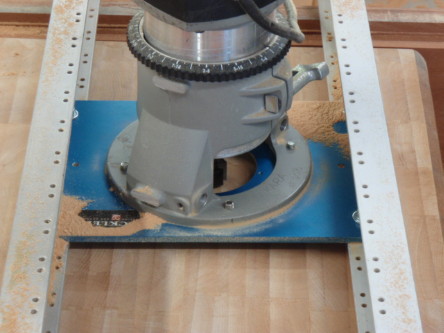 |
|
|
|
|
|
|
|
|
|
|
| After flattening the top, I sanded the existing finish off of the sides: |
|
|
|
|
|
| 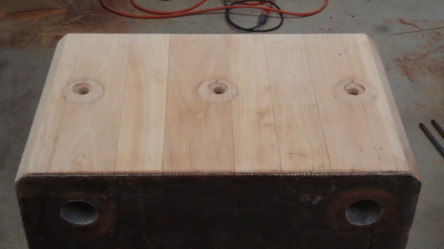 | The tiebolt holes will snag and destroy a sanding belt instantly. |
|
| 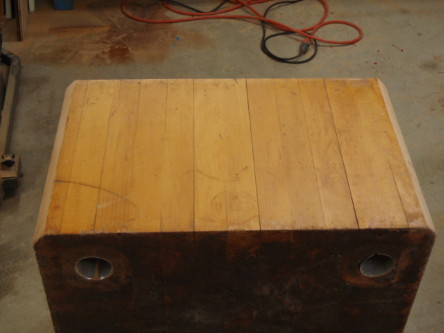 | Before |
|
|  | After |
|
|  | Detail
of one of several opened joints. The tiebolts will not pull these
together: We'll accept them as artifacts of age and use. |
|
|
|
|
|
|  | The bottom had been painted, appparently at the factory. I put a coat of modern water based poly-acrylic clear finish on . |
|
| 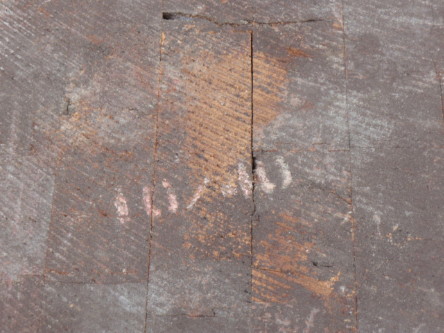 | I
assume this is the manufacture date. October of 1940 makes sense, or it could be the tenth week or day of 1940.
Another option would be week or day #40 of 1910, but I don't
think the block is that old.
Notice the marks from the machine used to plane the bottom. |
|
|
|
|
|
| 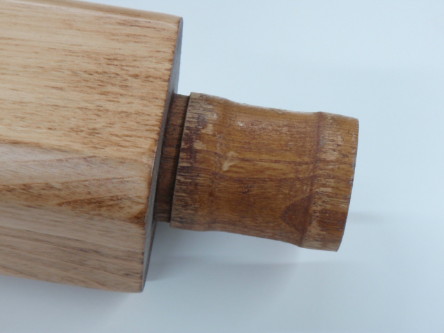 | Detail of the leg tenon. Note the relief cuts |
|
| 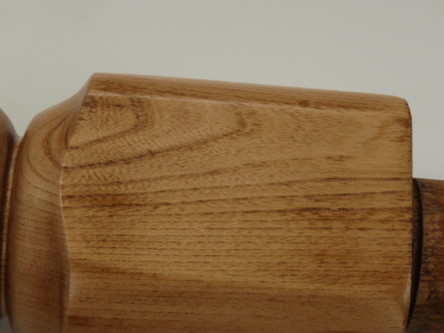 | Elm? |
|
| 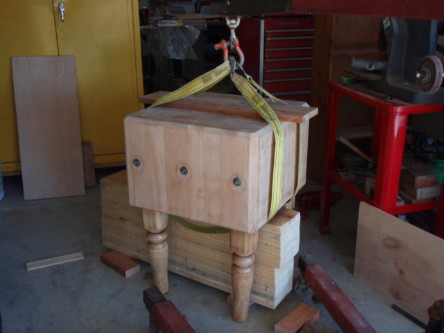 | Right side up, legs on, we're nearly finished. |
|
| 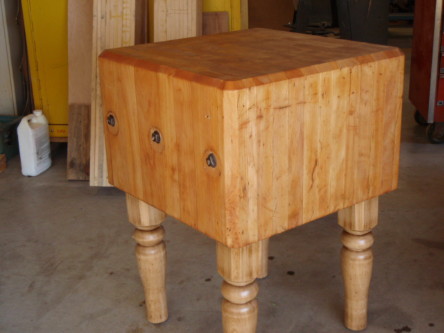 | After
the first application of mineral oil. Note that on the sides I
made no attempt to remove the "character." I just wanted to
remove the finish that had been applied sometime in the past. |
|
| 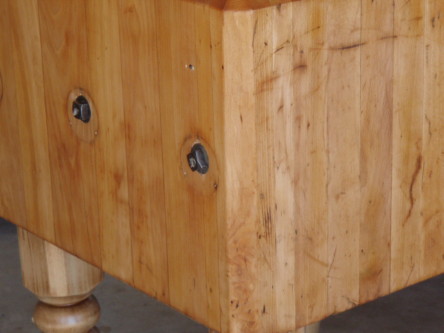 |
|
|
| 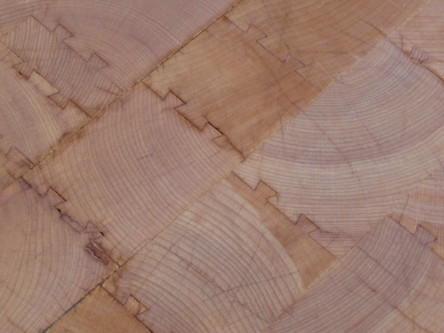 | Detail of the double dovetail construction. The individual pieces range from about 1" to about 5" in width. |
|
|
|
|
|
|
|
|
|
|
|
|
|
|
|
|
|
|
|
|
| email | Let's go Home. |
|


























